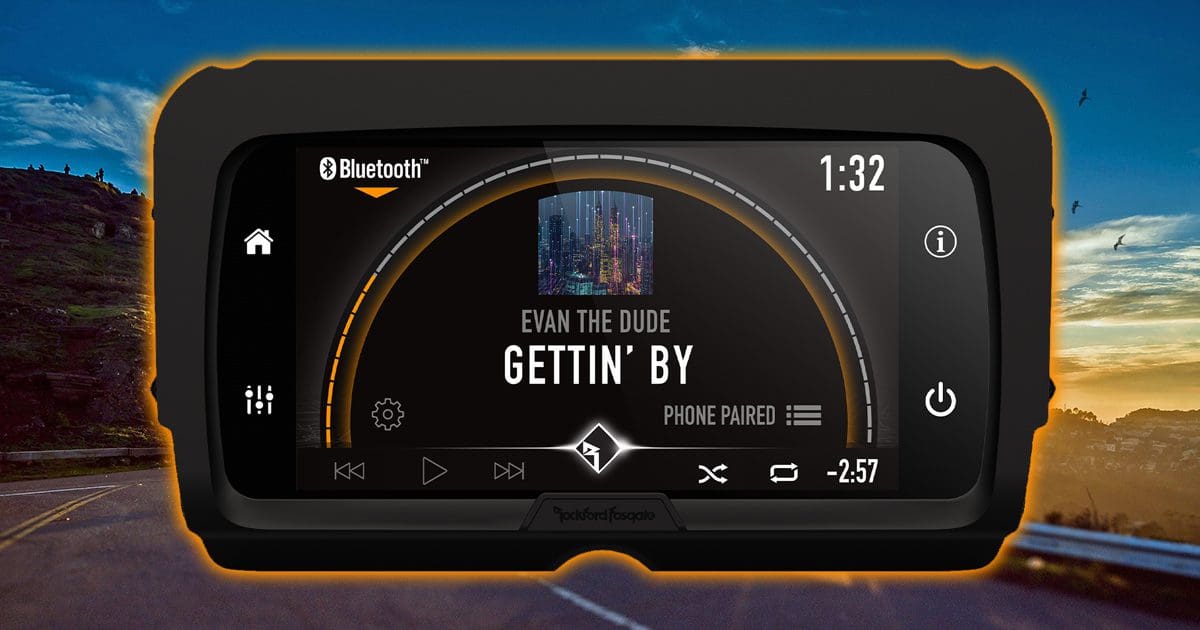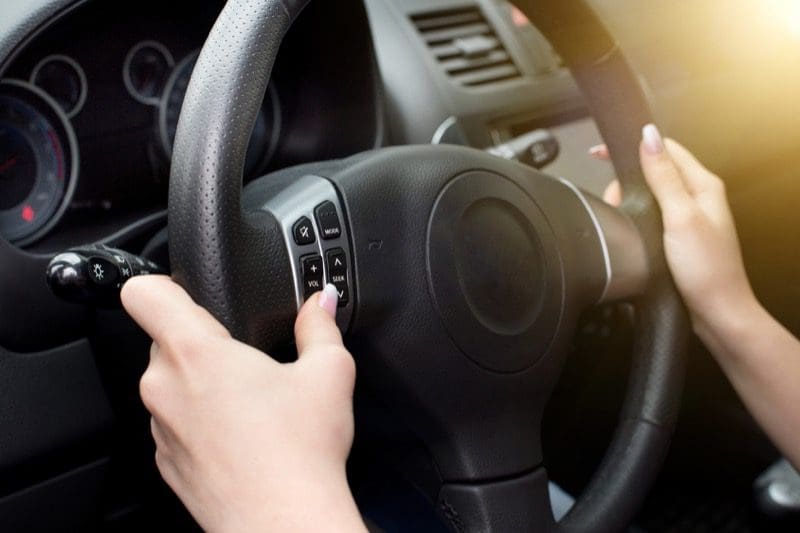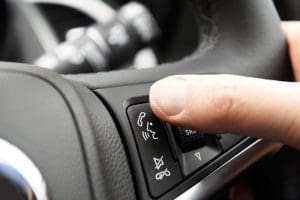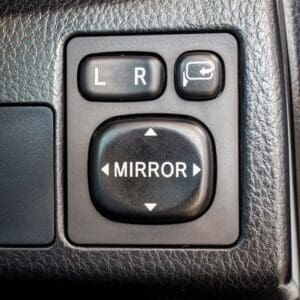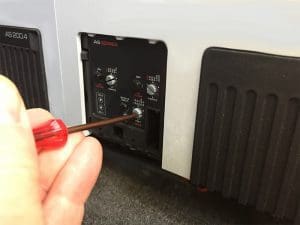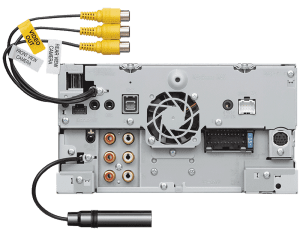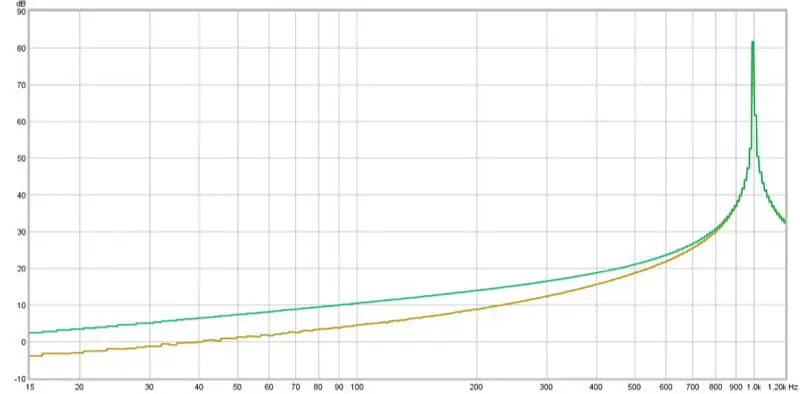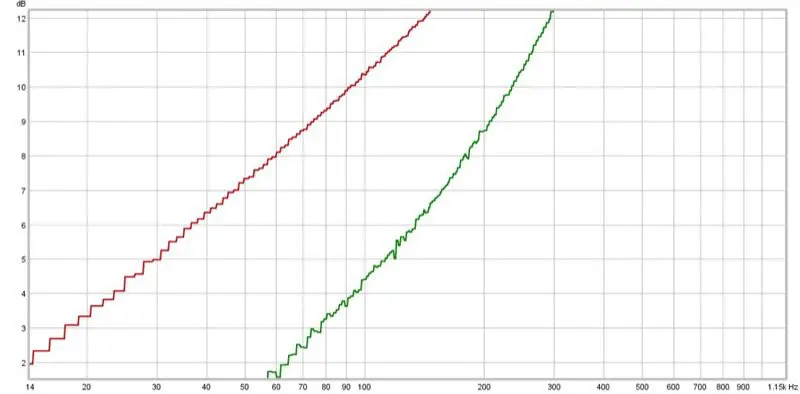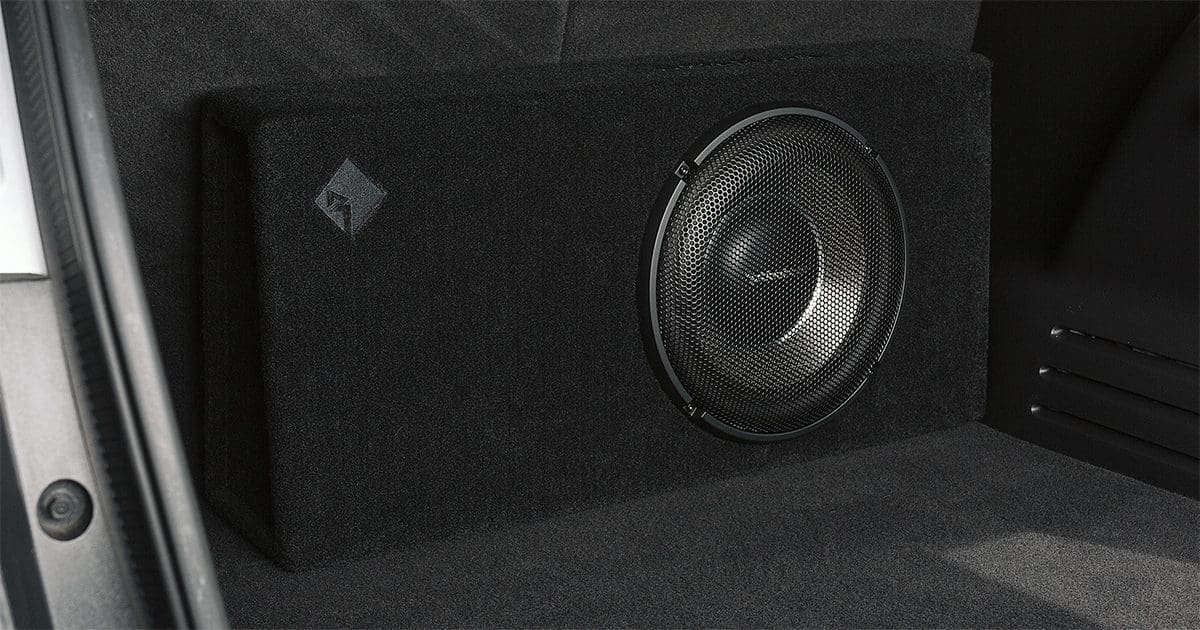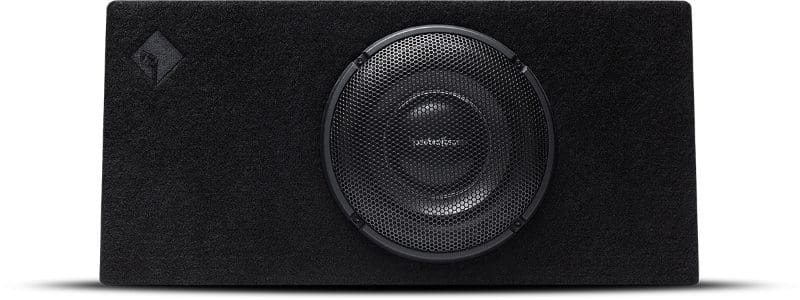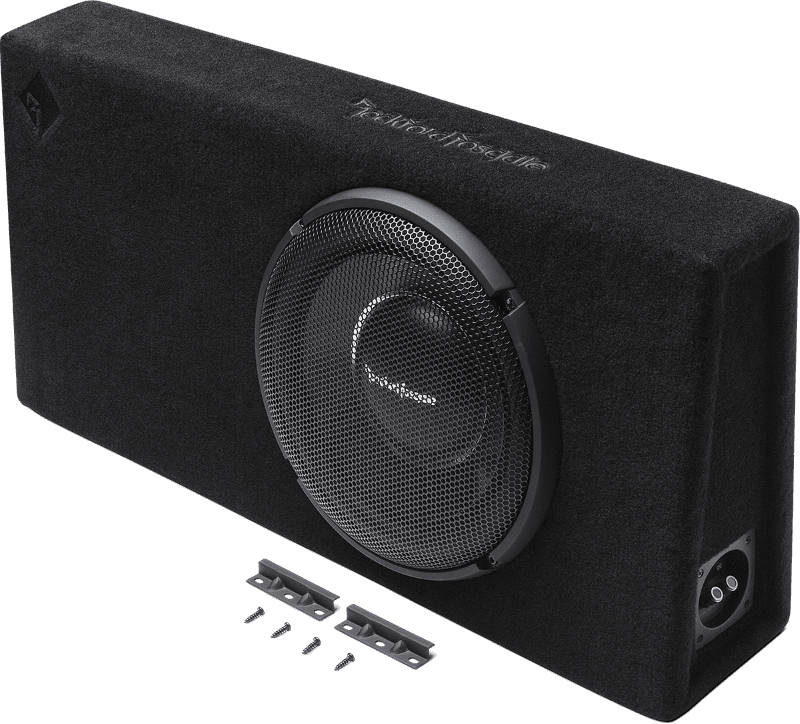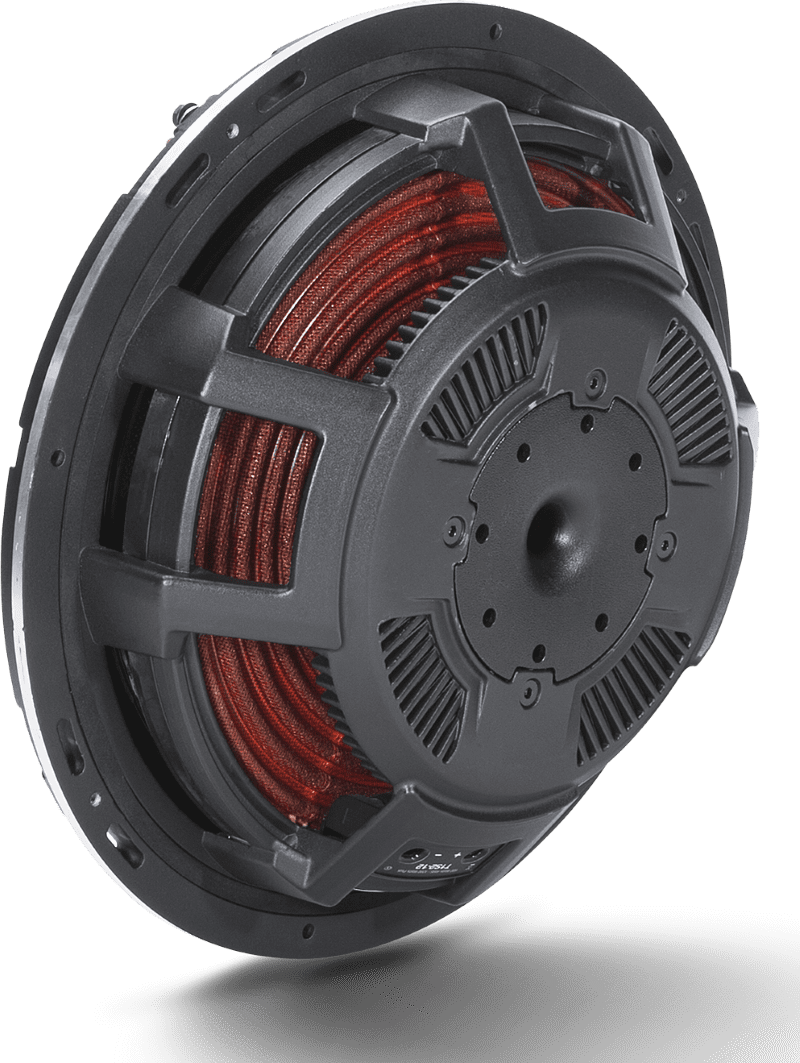Rockford Fosgate, a brand synonymous with Harley-Davidson amplifier, speaker and subwoofer upgrades, has just introduced its PMX-HD14 multimedia infotainment system. If you have a 2014 and newer Street Glide or Ultra, or 2015 and newer Road Glide, this might be the perfect way to make your entire stereo system sound better. Best of all, it’s got a unique trick up its sleeve. Let’s check it out.
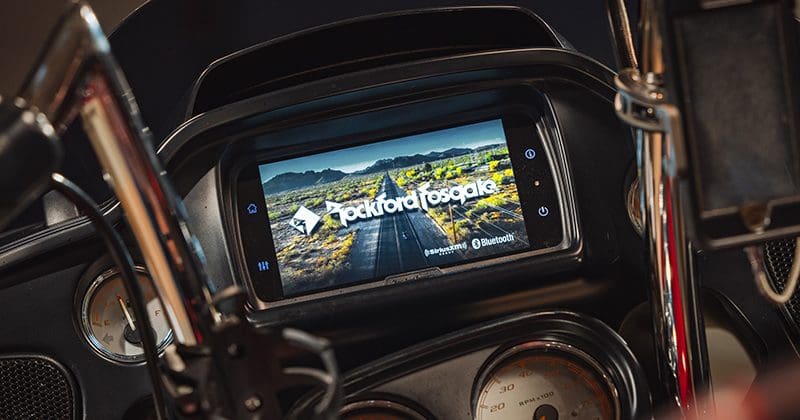
Features of the Rockford Fosgate PMX-HD14 Radio
The PMX-HD14 is Rockford Fosgate’s second foray into the multimedia receiver market for Harley-Davidson. The radio is a direct drop-in upgrade for many of H-D’s touring bikes. This plug-and-play design works with the existing power and speaker wiring. It also features a 7-inch touchscreen that works even if the rider is wearing gloves. The screen and the trim around it are Element Ready, the term Rockford Fosgate gives to products that are sealed to keep out water and dust and can handle prolonged UV exposure and all the vibrations from applications like a big V-twin motorcycle.
In terms of the interface, there are four fixed buttons adjacent to the screen for Home, Settings, Information and Power control. A short press on the information button in the top right increases the radio volume, and a short press on the power button below it lowers the volume. Pressing and holding the information button brings up an odometer and distance-since-last-service display.
Rockford Fosgate is on top of the integration situation with the PMX-HD14. The radio is compatible with the factory-installed handlebar audio controls without the need for any additional parts. It works with wireless headsets and the OEM CB system when the WHIM and CB modules are present. And there’s no need to reflash the bike to maximize the radio’s performance. These features make the radio ideal for those who don’t want permanent modifications on their motorcycle.
Harley-Davidson Multimedia Radio Audio Sources
Of course, the PMX-HD14 has an AM/FM and Weather Band receiver, so you can tune in to your favorite local radio stations. An optional SXV300 tuner module will give you access to SiriusXM satellite radio for uninterrupted genre-specific programming from coast to coast. You can also play MP3, WMA or FLAC digital audio files from a USB memory stick. A Bluetooth receiver allows you to play music stored on a portable media player or stream audio from your smartphone.
The PMX-HD14 also includes Apple CarPlay. Connect your Apple iPhone and you can easily access entertainment, communication and navigational information. You can make phone calls or send text messages without taking your eyes off the road. If you’re on a cross-state or cross-country adventure, access to Apple Maps, Google Maps and Waze will help you reach your destination efficiently and safely. Of course, dedicated CarPlay streaming apps like Pandora, IHeartRadio, Pandora or Spotify make listening to almost anything you want quick and easy.
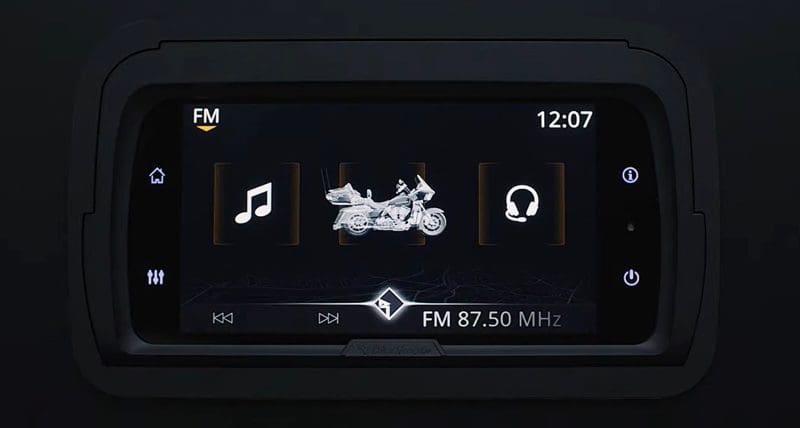
Take Your Party on the Road
Rockford Fosgate knows that an essential part of owning a Harley-Davidson motorcycle is the lifestyle and brotherhood with fellow riders. That awareness led them to create a feature called Street Party Mode. If your friends have a PMX-HD14 on their bikes, you can share whatever music you’re playing. They can connect their radios to yours using a proprietary Bluetooth 5.0 solution. The crew can enjoy the same music while cruising or hanging out.
Amazing Audio and Processing Features
The PMX-HD14 includes a built-in amplifier that can deliver 25 watts of clean power to four 4-ohm speakers or 50 watts to four 2-ohm speakers. The radio has six preamp outputs that provide up to 4 volts RMS to your amplifiers. A built-in 14-band graphic equalizer allows you or your installer to fine-tune the sound to your listening preferences. Rockford Fosgate invested a lot of time developing this radio, with innovations like audio presets – called Optimized Tunes – for the different Rockford Fosgate amplifier, speaker and subwoofer upgrade solutions available for your bike.
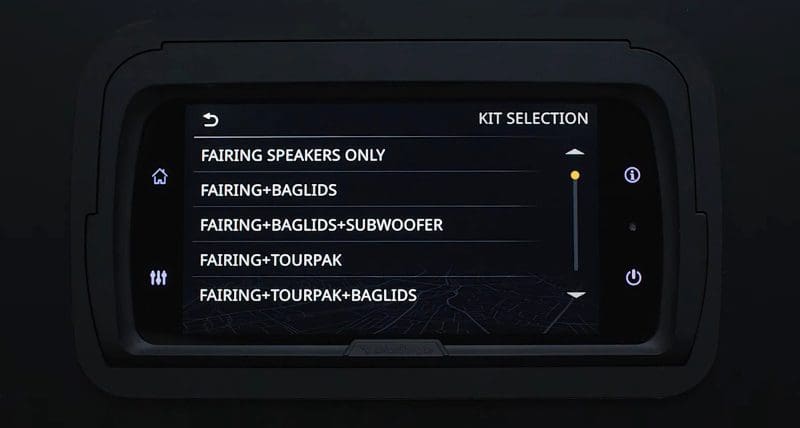
Transform Your Motorcycle Adventure with Rockford Fosgate
If high-quality sound, reliability and an easy-to-use interface are on your radio shopping list, drop by a local authorized Rockford Fosgate retailer and check out the Rockford Fosgate PMX-HD14. With a very detailed compatibility list on the product website, you can instantly see whether the radio is suitable for your touring bike. Follow Rockford Fosgate on Facebook and Instagram to keep up with their latest releases. Of course, their YouTube Channel has some of the coolest and most informative videos in the mobile audio industry.
This article is written and produced by the team at www.BestCarAudio.com. Reproduction or use of any kind is prohibited without the express written permission of 1sixty8 media.
Naples, FL 34110
